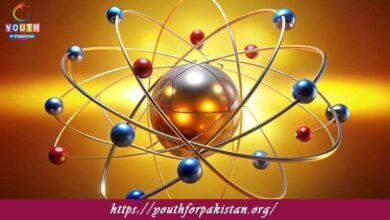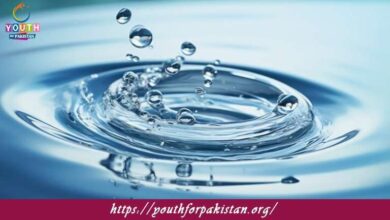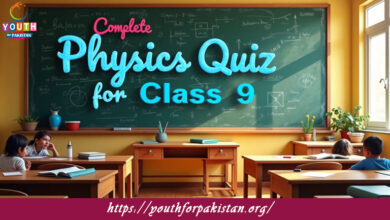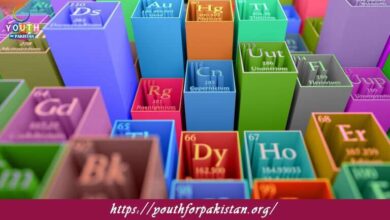9th Class Biology Chapter 9 MCQs with Answers
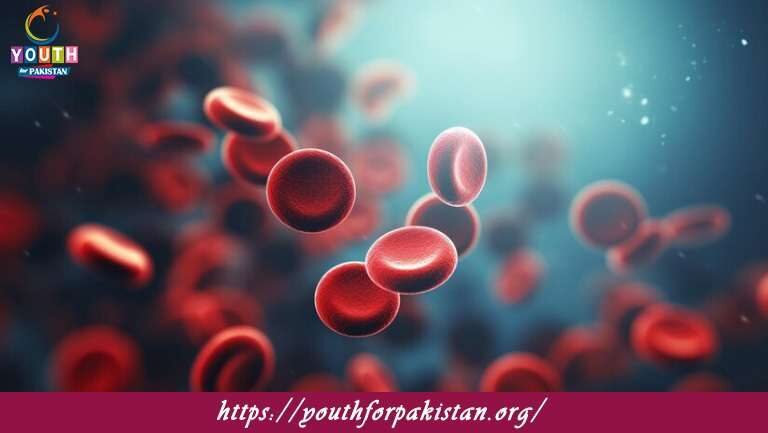
Understand the process of the movement of material in living organisms through “Transport MCQs” for 9th-class biology. Transportation in plants and animals would be learnt through xylem and phloem with the circulatory system. Prepare yourself by practicing well-structured MCQs based on standard concepts for easy understanding.
The circulatory system is responsible for the transport of:
a) Nutrients
b) Oxygen
c) Waste products
d) All of the above
The liquid component of blood is called:
a) Plasma
b) Serum
c) Lymph
d) Hemoglobin
Red blood cells are primarily responsible for:
a) Carrying oxygen
b) Fighting infections
c) Clotting blood
d) Producing hormones
The main function of white blood cells is to:
a) Carry oxygen
b) Fight infections
c) Transport nutrients
d) Aid in blood clotting
Blood vessels that carry blood away from the heart are called:
a) Arteries
b) Veins
c) Capillaries
d) Venules
The largest artery in the human body is the:
a) Aorta
b) Pulmonary artery
c) Carotid artery
d) Femoral artery
Blood is returned to the heart from the body by the:
a) Pulmonary veins
b) Vena cava
c) Coronary veins
d) Renal veins
The smallest blood vessels in the body are called:
a) Arteries
b) Veins
c) Capillaries
d) Venules
Which of the following is NOT a component of the lymphatic system?
a) Lymph nodes
b) Lymphatic vessels
c) Heart
d) Spleen
The lymphatic system plays a role in:
a) Carrying oxygen
b) Regulating body temperature
c) Immune response
d) Transporting hormones
The process by which substances move from an area of higher concentration to an area of lower concentration is called:
a) Active transport
b) Osmosis
c) Diffusion
d) Filtration
Which of the following is a waste product transported by the circulatory system?
a) Oxygen
b) Carbon dioxide
c) Glucose
d) Water
The process by which water and dissolved substances are forced through a membrane due to hydrostatic pressure is called:
a) Osmosis
b) Filtration
c) Active transport
d) Diffusion
In the lungs, oxygen moves from the alveoli into the blood through:
a) Diffusion
b) Osmosis
c) Active transport
d) Filtration
The heart chamber that receives oxygenated blood from the lungs is the:
a) Right atrium
b) Left atrium
c) Right ventricle
d) Left ventricle
Which blood vessel carries oxygenated blood from the lungs to the heart?
a) Pulmonary artery
b) Pulmonary vein
c) Aorta
d) Vena cava
The process by which cells take in substances from the extracellular fluid by engulfing them is called:
a) Exocytosis
b) Endocytosis
c) Osmosis
d) Diffusion
Blood is pumped out of the heart to the rest of the body by the:
a) Left atrium
b) Right atrium
c) Left ventricle
d) Right ventricle
The exchange of gases (oxygen and carbon dioxide) between the blood and body tissues occurs in the:
a) Lungs
b) Heart
c) Kidneys
d) Capillaries
The heart valve that separates the left atrium from the left ventricle is the:
a) Tricuspid valve
b) Pulmonary valve
c) Aortic valve
d) Mitral valve
Blood is pumped out of the heart to the lungs by the:
a) Left atrium
b) Right atrium
c) Left ventricle
d) Right ventricle
The process by which substances move across a cell membrane with the help of carrier proteins is called:
a) Osmosis
b) Facilitated diffusion
c) Active transport
d) Filtration
The heart valve that separates the right atrium from the right ventricle is the:
a) Tricuspid valve
b) Pulmonary valve
c) Aortic valve
d) Mitral valve
Which of the following is a function of the respiratory system?
a) Transporting nutrients
b) Regulating body temperature
c) Exchanging gases (oxygen and carbon dioxide)
d) Filtration of blood
The primary function of the left ventricle is to:
a) Pump oxygenated blood to the lungs
b) Pump deoxygenated blood to the body
c) Pump oxygenated blood to the body
d) Pump deoxygenated blood to the lungs
The process by which red blood cells are produced is called:
a) Osmosis
b) Hemostasis
c) Hemolysis
d) Erythropoiesis
Blood flows through the circulatory system in a specific direction due to the action of:
a) Semilunar valves
b) Atrioventricular valves
c) Ventricles
d) The pumping action of the heart
The part of the brain that controls heart rate, blood pressure, and breathing is the:
a) Cerebellum
b) Cerebrum
c) Medulla oblongata
d) Hypothalamus
The movement of substances against the concentration gradient, requiring energy, is known as:
a) Osmosis
b) Facilitated diffusion
c) Active transport
d) Filtration
Blood from the digestive organs is transported to the liver through the:
a) Renal vein
b) Hepatic portal vein
c) Pulmonary vein
d) Femoral vein
The process by which blood vessels narrow to reduce blood flow is known as:
a) Vasodilation
b) Vasoconstriction
c) Venous return
d) Filtration
The cardiovascular system consists of the heart, blood vessels, and:
a) Lungs
b) Kidneys
c) Liver
d) Blood
Blood returning from the head and upper body is delivered to the heart through the:
a) Pulmonary veins
b) Vena cava
c) Coronary veins
d) Renal veins
The two major types of white blood cells are:
a) Neutrophils and basophils
b) Eosinophils and monocytes
c) Lymphocytes and monocytes
d) Neutrophils and lymphocytes
The part of the brain that controls body temperature, hunger, and thirst is the:
a) Cerebellum
b) Cerebrum
c) Medulla oblongata
d) Hypothalamus
The contraction phase of the heart is called:
a) Diastole
b) Systole
c) Cardiac cycle
d) Fibrillation
The relaxation phase of the heart is called:
a) Diastole
b) Systole
c) Cardiac cycle
d) Fibrillation
Blood is prevented from flowing backward in the veins by the action of:
a) Semilunar valves
b) Atrioventricular valves
c) Ventricles
d) Venous valves
The hepatic portal system allows nutrients absorbed by the intestines to be transported directly to the:
a) Heart
b) Brain
c) Liver
d) Lungs
The medical term for low blood pressure is:
a) Hypertension
b) Hypotension
c) Bradycardia
d) Tachycardia
The medical term for high blood pressure is:
a) Hypertension
b) Hypotension
c) Bradycardia
d) Tachycardia
The hepatic portal vein carries blood from the digestive organs to the:
a) Brain
b) Heart
c) Liver
d) Lungs
The contraction of the heart is stimulated and regulated by electrical signals produced by the:
a) Aorta
b) Vena cava
c) Sinoatrial node
d) Atrioventricular node
The medical term for an abnormally fast heart rate is:
a) Hypertension
b) Hypotension
c) Bradycardia
d) Tachycardia
Which of the following is NOT a function of the lymphatic system?
a) Transporting nutrients
b) Filtering harmful substances
c) Immune response
d) Absorption of fats
Blood flows from the right ventricle to the:
a) Pulmonary artery
b) Pulmonary vein
c) Aorta
d) Vena cava
The largest vein in the human body is the:
a) Aorta
b) Pulmonary artery
c) Vena cava
d) Femoral vein
The part of the brain that controls coordination and balance is the:
a) Cerebellum
b) Cerebrum
c) Medulla oblongata
d) Hypothalamus
Blood from the heart is transported to the lungs through the:
a) Left atrium
b) Right atrium
c) Left ventricle
d) Right ventricle
The lymphatic system plays a crucial role in the body’s:
a) Immune response
b) Oxygen transport
c) Regulation of body temperature
d) Synthesis of hormones
Blood is pumped out of the heart to the lungs by the:
a) Left atrium
b) Right atrium
c) Left ventricle
d) Right ventricle
The process by which blood vessels expand to increase blood flow is known as:
a) Vasodilation
b) Vasoconstriction
c) Venous return
d) Filtration
Blood from the lower body is delivered to the heart through the:
a) Pulmonary veins
b) Vena cava
c) Coronary veins
d) Renal veins
The heart valve that separates the left atrium from the left ventricle is the:
a) Tricuspid valve
b) Pulmonary valve
c) Aortic valve
d) Mitral valve
Which of the following is a function of the respiratory system?
a) Transporting nutrients
b) Regulating body temperature
c) Exchanging gases (oxygen and carbon dioxide)
d) Filtration of blood
The primary function of the left ventricle is to:
a) Pump oxygenated blood to the lungs
b) Pump deoxygenated blood to the body
c) Pump oxygenated blood to the body
d) Pump deoxygenated blood to the lungs
The process by which red blood cells are produced is called:
a) Osmosis
b) Hemostasis
c) Hemolysis
d) Erythropoiesis
Blood flows through the circulatory system in a specific direction due to the action of:
a) Semilunar valves
b) Atrioventricular valves
c) Ventricles
d) The pumping action of the heart
The part of the brain that controls heart rate, blood pressure, and breathing is the:
a) Cerebellum
b) Cerebrum
c) Medulla oblongata
d) Hypothalamus
The movement of substances against the concentration gradient, requiring energy, is known as:
a) Osmosis
b) Facilitated diffusion
c) Active transport
d) Filtration
If you are interested to enhance your knowledge regarding Physics, Chemistry, Biology, and Computer please click on the link of each category, you will be redirected to dedicated website for each category.


